1.6m marooned in Sylhet flood
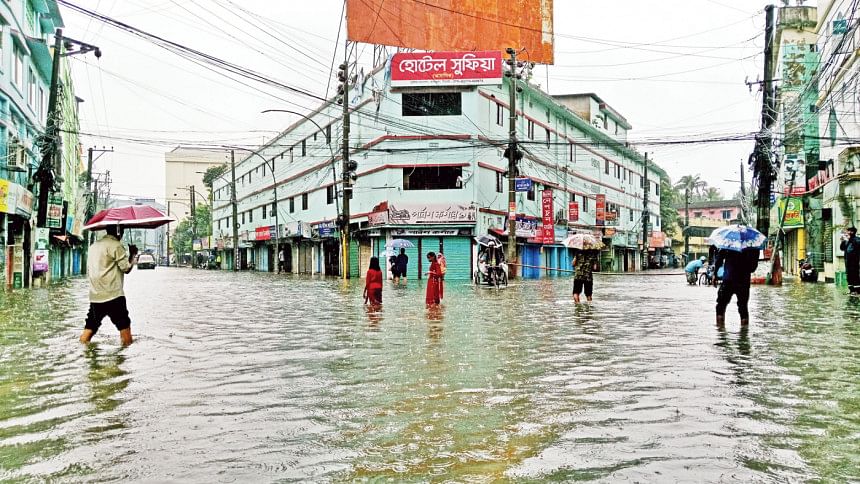
Eid has not brought joy to many in the Sylhet region as homes of more than 1.6 million people were flooded and nearly 30,000 had to move to shelter centres.
Many families with children and elderly left their inundated homes and took shelter on roads with nothing but plastic sheets to protect them from rain.
"Flood water entered my home the night before the Eid. As the water rose, I left the earthen hut with my grandchildren and waded through knee-deep water to this road," 60-year-old Mosammat Begum, who was by the Sylhet-Bholaganj road in Tukerbazar area, told The Daily Star yesterday.
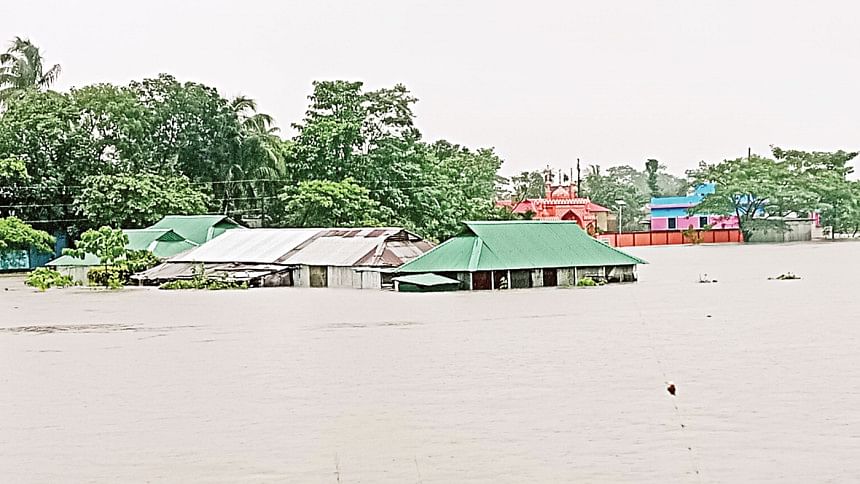
Her three grandchildren, aged less than 10, were with her under a shed the family built with plastic sheets and sticks by the road.
"We can see our hut from here. There is chest-high water inside. It may collapse anytime. Our food and belongings are already damaged," said the woman whose son is a farm worker.
Many families were seen by the side of roads in Sylhet, Sunamganj, Moulvibazar and Habiganj over the last two days.
On Sylhet-Tamabil and Sylhet-Bholaganj roads, people took shelter on empty trucks and lorries.
In vast areas and hundreds of inundated villages, dinghies are the only means to go from one place to another in monsoon.
Since many poor families do not have one, they are not able to move to government shelters.
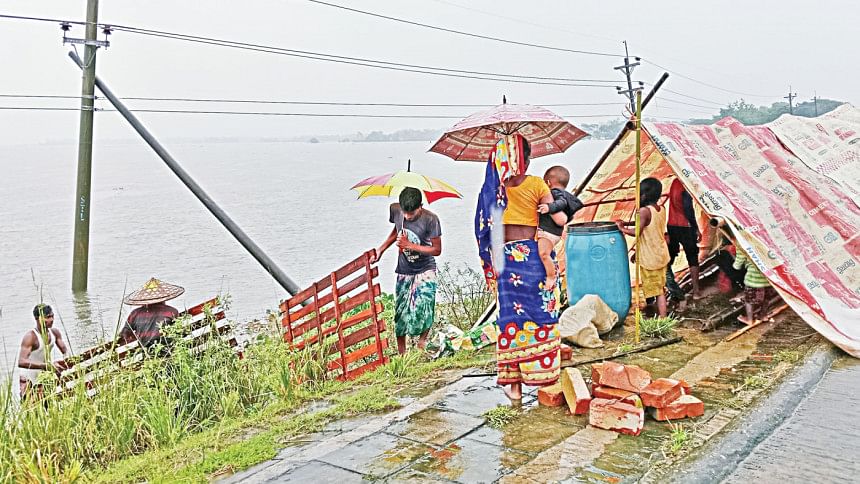
Samad Ahmed, a farmer of Meghargao area in Sylhet's Companiganj, said he, his wife and children went to a primary school near their village the day before Eid, but it was already overcrowded.
"Then we went to a kitchen market where a shopkeeper let us stay in his shop," he said.
In Sylhet district, almost 75 percent of areas, including 23 wards of the city and 1,548 villages in 13 upazilas, have been flooded, directly affecting over 8.25 lakh people, said Deputy Commissioner Sheikh Russel Hasan.
While poor people are the most vulnerable, the comparatively well-off farmers also lost their stored grain to the flood.
In Sunamganj, homes of 5.6 lakh people have been flooded as the Surma flowed 145cm above the danger mark in Chhatak, 43cm in Sunamganj town and 21cm in Derai.
Deputy Commissioner Mohammad Rashed Iqubal Chowdhury said new areas were flooded yesterday.
Officials in Moulvibazar said nearly half of the district was flooded, affecting 1.93 lakh people.
Urme Binte Salam, deputy commissioner of Moulvibazar, said, "As more rainfall is in the forecast, we are preparing for an even more devastating flood."
In Habiganj, homes of thousands of people have been flooded and more villages are at risk as rivers have been swelling since Wednesday night.
The floods are caused as the Surma, Kushiyara, Manu, Dhalai, Kalni, and Gowain rivers have swelled, said Bangladesh Water Development Board officials.
In Sylhet, the Surma was flowing 94cm above the danger level at Kanaighat and 36cm in Sylhet city; the Kushiyara was 56cm above in Zakiganj, and 99cm in Fenchuganj; and the Gowain was flowing 5cm above in Gowainghat.
In Moulvibazar, the Juri river was flowing 199cm above the danger level in Juri; the Dhalai was 23cm above in the town; and the Kushiyara 20cm in Sherpur.

In Habiganj, the Khowai River in Chunarughat's Balla was flowing 131cm over of the danger level with 75cm in Habiganj's town and 21cm in Sayestaganj. The Kushiyara was also flowing 21cm above the danger level in Baniachang's Markuli with Kalni-Kushiyara 31cm in Ajmiriganj.
Officials say the rivers are swelling due to torrential rains in Meghalaya, which is upstream from Sylhet. The Indian Met office yesterday morning said it rained 111.4mm in Meghalaya's Mawsynram and 109.8mm in Cherrapunji in just 24 hours.
Besides, Sunamganj town saw 100mm rainfall, Habiganj 115mm, Sylhet city 94mm, and Moulvibazar's Sherpur 75mm.
The Met office in Bangladesh forecasts heavy and very heavy rains in Sylhet division, starting from today.
Officials said many areas were at risk of landslides.


 For all latest news, follow The Daily Star's Google News channel.
For all latest news, follow The Daily Star's Google News channel. 



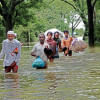
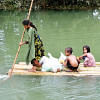


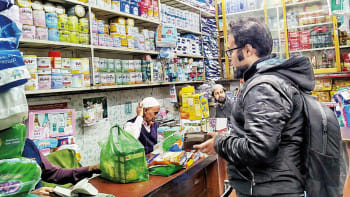
Comments